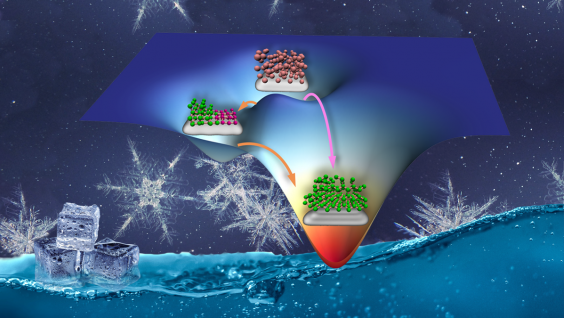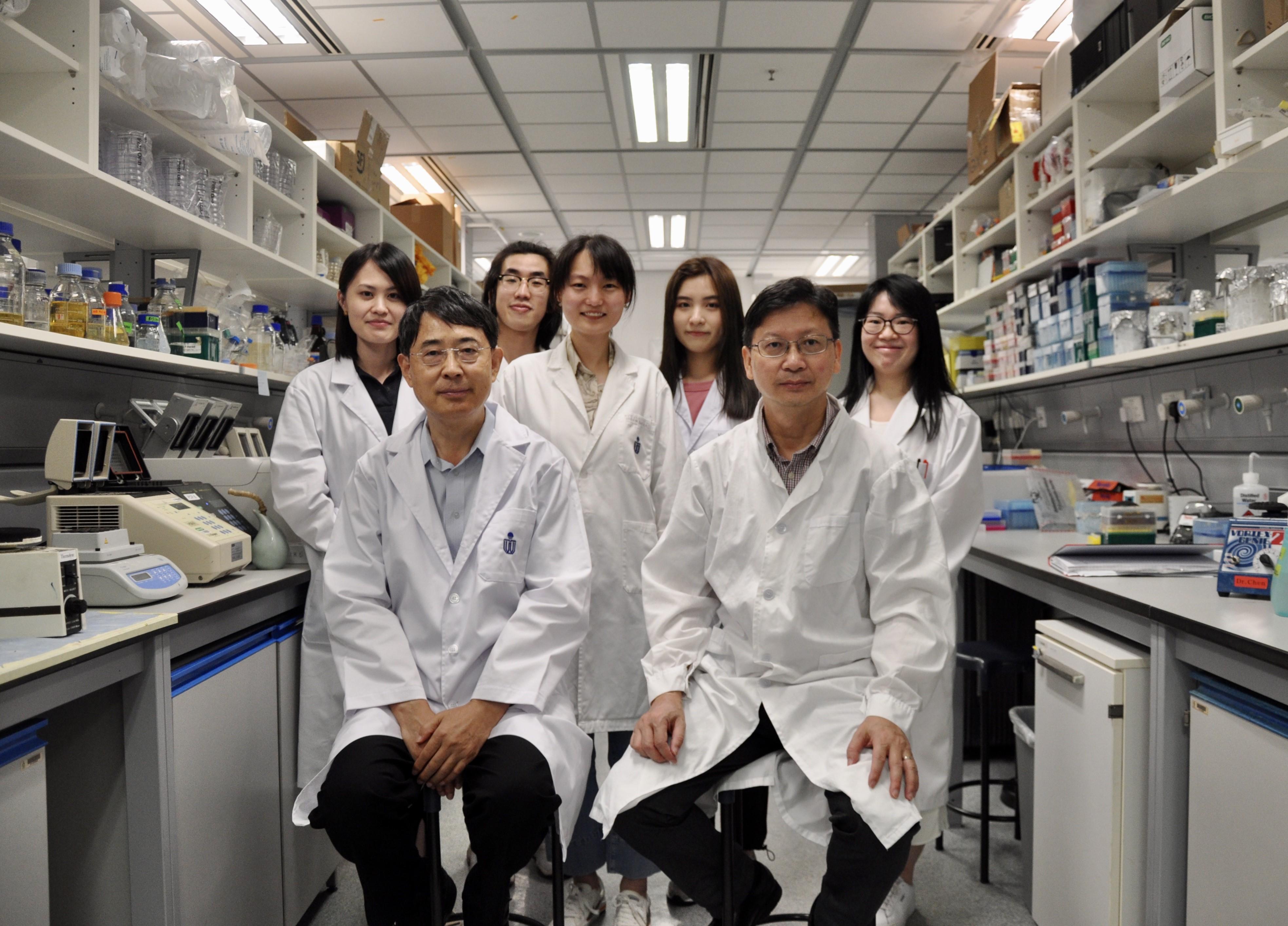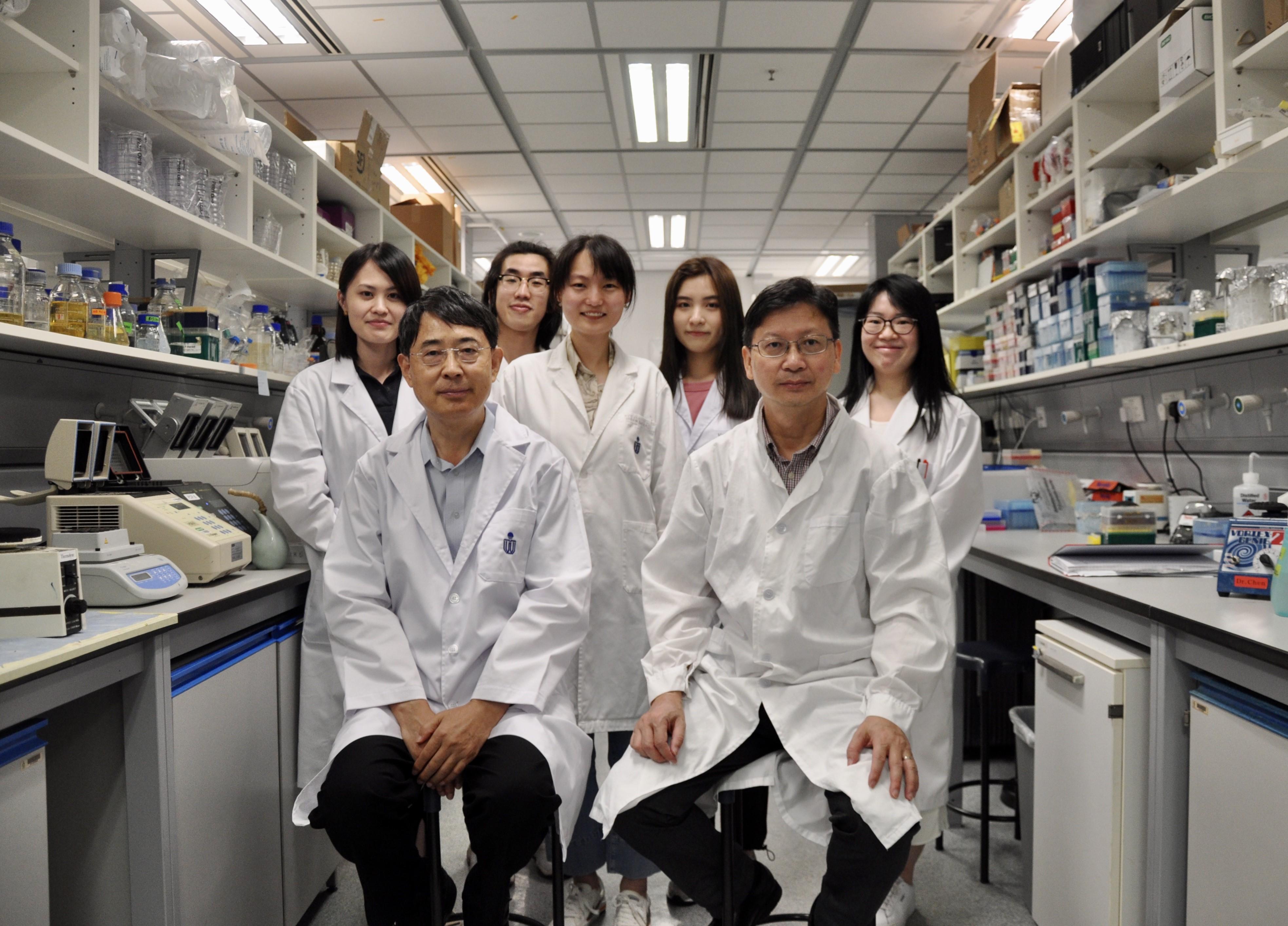Scientists from the Hong Kong University of Science and Technology (HKUST) have recently discovered a non-classical nucleation process that can greatly facilitate ice formation on foreign surfaces. This finding lays the foundation to predict and control crystallization processes.
Ice is omnipresent and profoundly impacts our daily life, influencing areas such as climate change, transportation, and energy consumption. Understanding the process of ice formation can decelerate the rate at which glaciers melt and sea levels rise and alleviate other major environmental concerns. Read More...

Ice nucleation on foreign surfaces can proceed via both one-step (magenta arrow) and two-step (orange arrows) pathways, facilitated by the balanced synergetic, entropic effects of hexagonal (green spheres) and rhombic (purple spheres) ice structures.
科研發現



